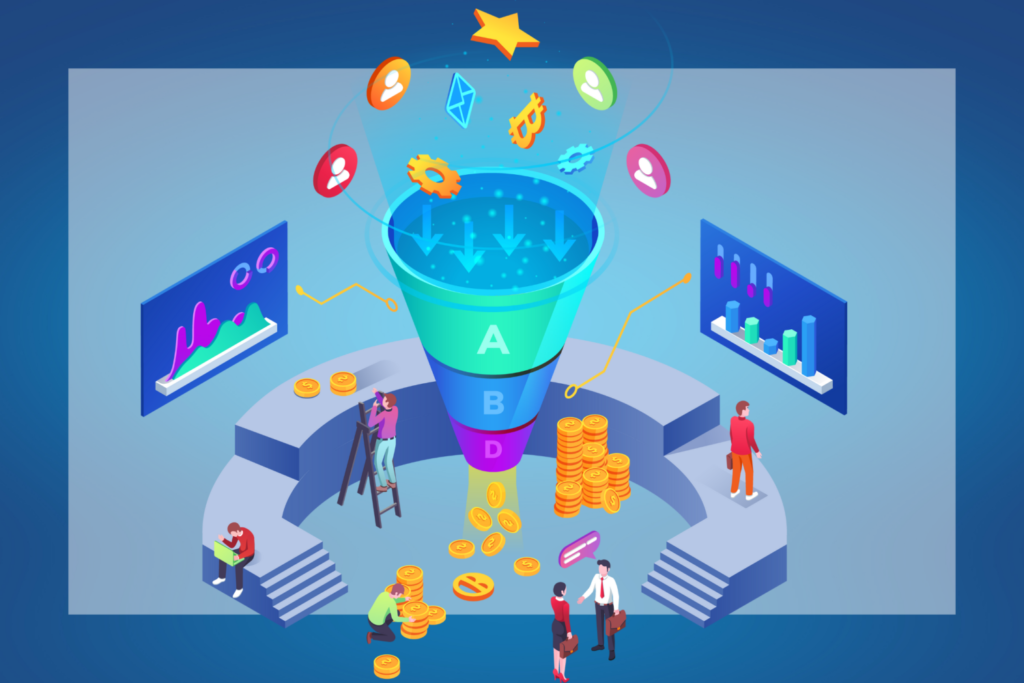Together, we’ll explore the stages of a sales funnel, guiding customers from curiosity to conversion, and turning strangers into satisfied buyers. Mastering the Art of Sales Funnels: Unlock the code to customer conversion! Join me as we deep dive into the stages of a sales funnel, dissecting how potential leads transform into loyal customers. Let’s revolutionize your sales strategy and boost your business to new heights!

#1. Awareness: At the top of the funnel, the focus is on generating awareness and attracting a wide audience. This can be achieved through various marketing strategies such as content marketing, social media, advertising, search engine optimization, and other methods. The goal is to drive traffic to your website or mobile app and capture the attention of potential customers.

#2. Interest/Engagement: Once people become aware of your brand, the next step is to capture their interest and engage with them. This stage involves providing valuable content, showcasing your products or services, and building a relationship with your audience. It may include tactics like lead magnets, email marketing, webinars, or free trials to keep prospects engaged and interested in what you have to offer.

#3. Consideration/Evaluation: As prospects show interest, they enter the consideration stage where they evaluate your offerings and compare them with competitors. This is a crucial stage where you need to provide in-depth information, case studies, testimonials, and demonstrations to address their questions and concerns. The goal is to position your product or service as the best solution for their needs.

#4. Decision/Purchase: In the decision stage, prospects are ready to make a purchase. This may involve a direct sales approach, where your sales team interacts with the prospect to provide personalized assistance and address any remaining objections. Alternatively, if you have a self-service model, prospects can make a purchase directly through your website or app. The focus here is to facilitate a smooth buying experience and make it as easy as possible for the prospect to become a customer.

#5. Retention/Loyalty: The sales funnel doesn’t end with a purchase. Once a customer has made a purchase, it’s essential to nurture the relationship and encourage repeat business. This stage involves post-purchase support, customer service, and engagement strategies such as loyalty programs, upselling, cross-selling, and gathering feedback. The goal is to turn customers into loyal advocates who will not only make repeat purchases but also refer your business to others.

It’s important to note that the stages and terminology used in a sales funnel can vary depending on the specific business and industry. However, the general idea remains consistent: to guide potential customers through a series of stages and optimize conversions at each step.
